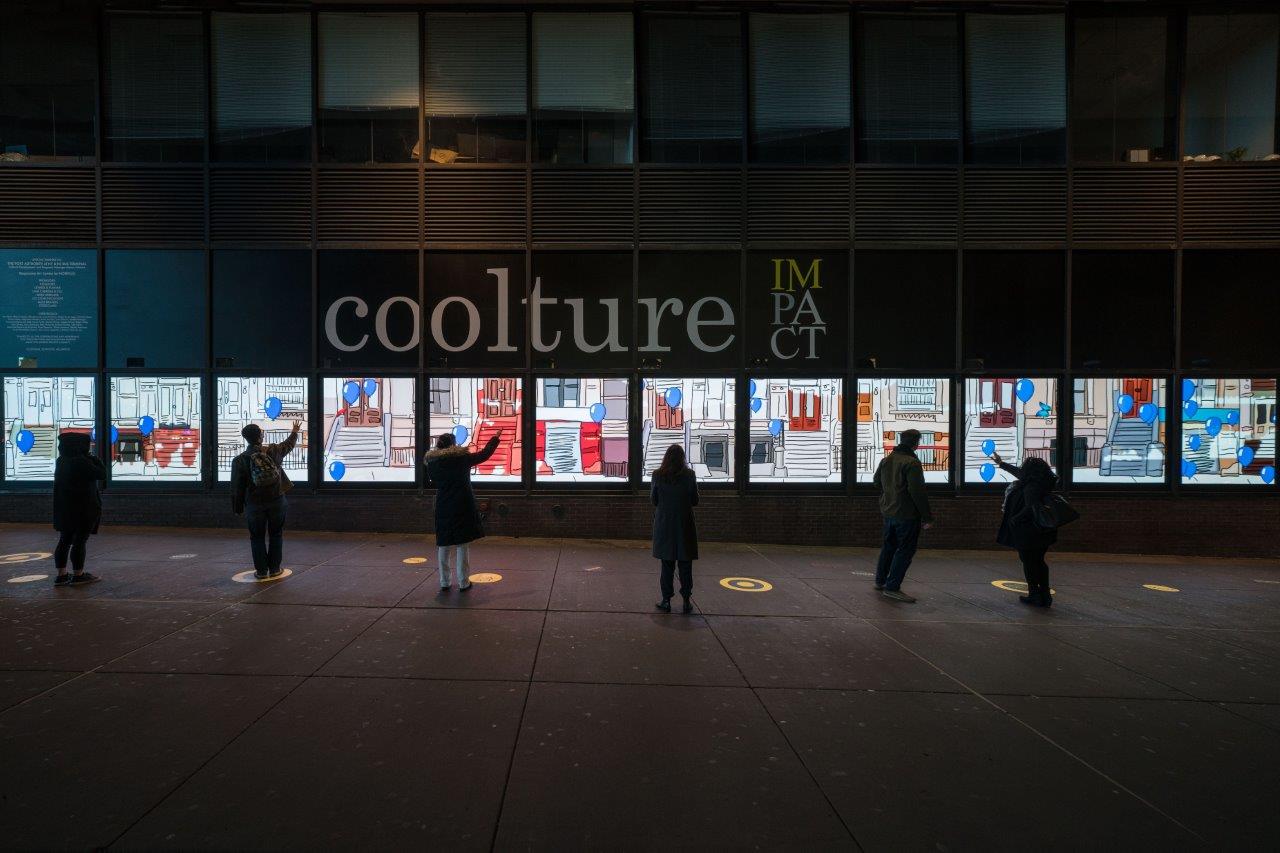Staying Engaged in a Contactless World
How Do Museums Move Forward?

High crowd densities and the prevalence of high-contact areas in typical museum exhibits are causing museums to question their assumptions in the wake of the COVID-19 pandemic. From the way patrons purchase tickets and interact with those at the help desk to the way exhibitions are laid out and designed, museums are currently devising new operating procedures that will revolve around guest safety and contactless technology. The goal is to keep visitors safe while not diminishing the overall museum experience.

“Primarily, the concerns include making visitors feel comfortable being in large crowds again. We understand that the majority of visitors intend on returning to museums within a year,” said Tani Klein, senior director of sales with Planar. Museums are currently planning for that return by putting the focus on technology that helps create a safe environment—including technology that monitors body temperatures, regulates the number of people within an exhibit, and helps to communicate important safety protocols and information to visitors.
Larry Howard, director of entertainment sales for the Americas at Christie, said that museums are particularly focusing on the issue of space. “Everyone needs space between themselves and others, and this will change some museum areas drastically. Videos explaining how distancing works will be a big help to customers. Coupled with old-fashioned signs and floor markings, these videos will be very effective. Exhibits that already incorporate distancing will be looked at favorably, and more of them will be implemented.”
The Contactless Experience
Beyond putting guests at ease, many museums are looking to increase the prevalence of contactless technology in their facilities, helping to advance their overall venue technology while keeping their patrons safe. “Technological solutions will be absolutely key to museums limiting personal contact,” said Klein. “Personal-use styluses will help reduce the spread of germs on visitors’ hands, while still allowing the visitors to interact with touch technologies. We’ll likely see proximity sensors, motion sensors, and gesture-sensing technology for visitors to trigger and engage with content.” These personal styluses could also be branded and gifted to the patron, providing them with a unique souvenir from their visit.
Gesture-based technology, potentially with AI triggers or ultra-high frequency RFID, could be an ideal way for museums to encourage engagement without direct contact. Patrons could use their entire body to interact with exhibits in interesting and new ways.
[Museums Step Up Engagement With Next-Level Tech]
Klein said that Planar’s involvement in the Times Square installation COOLTURE IMPACT, which invited visitors to not only view art but become part of the show, is a great example of something we may see more of in museums. “The unique video art installation featured Planar TVH Series fine-pitch LED video walls paired with motion-responsive technology that allowed passersby to make artistic digital canvases come alive with their own movements,” he added. Voice activation technology could also be used in a similar manner to help limit direct contact in future exhibits.
A daily selection of the top stories for AV integrators, resellers and consultants. Sign up below.

Mad Systems, an Orange, CA-based integration firm, has relied on its touchless technology offerings to limit contact, often converting non-touch monitors for interactive use. “Our ‘touchless touchscreen’ technology uses a small camera to track your facial movements to control a cursor. We can apply infrared overlays at a reasonable distance from a screen or projected wall to create a non-touch touchscreen experience,” explained Mad Systems founder Maris J. Ensing.
The sensors in these touchless touchscreens also allow visitors to activate selections by pointing at various images. When the company’s TeaParty show controller capabilities are implemented, visitors can use their smartphones to control the screens, changing the subtitle language on a video, for example. Mad Systems is also using sensor-based technology to replace physical handles or buttons, allowing visitors to motion their hand above an area to trigger further engagement. Taking it a step further, making these types of options portable could help preserve social distancing and further accommodate the guests.
Make Way for Emerging Technologies
When thinking about the best way to display information and images within an exhibit, many museums may start to increase the use of real-time, camera-based feedback to create crisp and clear projected visuals—including 3D visuals. Museums have used this technology within immersive-style exhibitions—for example, in the traveling Van Gogh Exhibit, which allows the work of Vincent van Gogh to come to life in an immersive environment.
Since COVID-19, this exhibit has continued to thrive in Toronto through “Gogh by Car,” which offers visitors a drive-in art experience. Organizers are now integrating social distancing circles to be able to reopen safely for patrons. Other museums are using portable projection systems to show programming in outside settings, similar to the drive-in movie theater experience. Success here could encourage museums to get creative and bring the museum experience to the community, offering pop-up or traveling exhibits in areas where people feel safe.
This type of experience could completely replace virtual reality (VR) engagement, because it does not require the use of individual headsets and people can enjoy the experience together while still following social distancing guidelines. Ensing commented: “Having 3D audio as part of the experience means that you’re experiencing something very similar to what you would expect with a VR headset, but without the concerns that a VR headset would bring—especially now. By the time the COVID-19 concerns are gone, VR headsets will be home-based technology, and most likely only relevant in very specific public applications.”
[High Tech Storytelling: Museums, Exhibits, and AV]
Christie is taking touchless interactivity one step further, creating a projection-based technology by combining its Pandoras Box AirScan with its Widget Designer products. Together, they are able to display a touchless interface over a variety of surfaces. This type of technology could be deployed in a variety of settings and offers further touchless engagement opportunities for guests.
Increased App Use

Museums will be focusing on their apps, making sure their capabilities—including allowing guests to purchase tickets, get access into exhibits, and engage within the exhibit—provide a personal journey tailored to each guest. “A good example of this is the Cleveland Museum of Art, which uses an app and feedback from cameras for guests to interact with artwork and exhibits,” said Patrick Ellis, senior account manager at Christie. Mobile devices may also be used to assist museum staff with taking temperatures of visitors upon entry and dispersing important information or alerts.
A Changing Demographic
Museums were already beginning to integrate many of these features pre-pandemic, not only for safety concerns but because of a change in guest preferences and demographics. “We are now dealing with an upcoming generation of visitors who swiped before they wiped, and their expectations are a lot different from what we’ve seen over the past 40 years,” said Ensing. “Just before this crisis, we opened a visitor center where the only printed graphics were the wallpaper—everything else was digital.”
Younger visitors are expecting this type of technology integration and hope for experiences that are so cutting-edge that they can Instagram them to the world. With growing concerns about attendance, museums will be clamoring to integrate innovative technology that will help them stand out from the crowd.
What Does the Future Hold for Museums and Technology?
Like every market segment, technology providers and museums are trying to find the best way forward while navigating safety and related issues in the wake of the pandemic. Howard noted, “I believe that technology will be helpful now and down the road. As time goes by and we get a better understanding of the transmissive properties of the virus, we will be better prepared from the design perspective as well as retrofits.”
It is certainly possible that museums and public spaces will be changed forever post-COVID-19. With the possibility of having to lower overall attendance, museums will need to work in partnership with technology providers to offer unique and customizable experiences that guests may not soon forget.
Jennifer is a freelance writer and marketing consultant based in the New York City area. Within the AV industry, Jennifer loves to explore how technology can alter the world around us, creating immersive experiences unlike any other. She has years of experience working with AV integrators, manufacturers, and event production companies in developing engaging content to increase their overall awareness.

